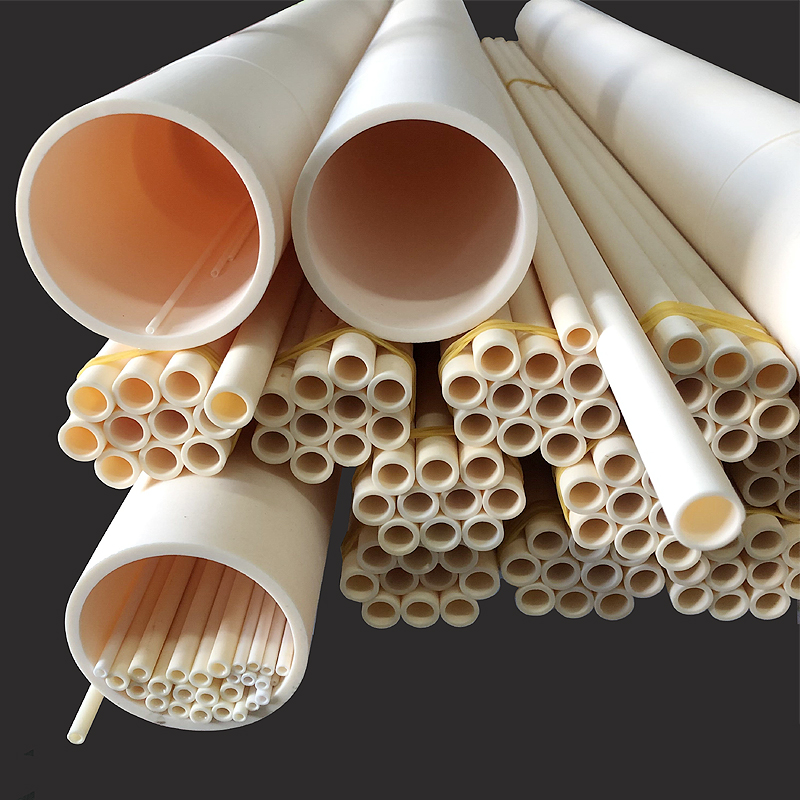Can Alumina Ceramic Tubes Be Used in Induction Heating Systems?

Induction heating systems are pivotal in various industrial applications, offering efficient and precise heating solutions. These systems work on the principle of electromagnetic induction, where an alternating current generates a magnetic field that induces an electric current within the material, causing it to heat up. While metals are the primary materials used in induction heating due to their conductive properties, ceramics, particularly alumina ceramic tubes, are gaining attention for their unique advantages in these systems.
Alumina Ceramic Tubes: An Overview
Alumina (Al2O3) is a highly durable ceramic material known for its excellent thermal and electrical insulating properties. It boasts a high melting point, exceptional hardness, and good chemical stability, making it a versatile material in extreme environments. These properties make alumina ceramic tubes suitable for various high-temperature applications, including kilns, furnaces, and thermocouple protection.
Induction Heating Systems and Alumina Ceramic Tubes
The integration of alumina ceramic tubes in induction heating systems might seem counterintuitive at first due to ceramics' non-conductive nature. However, alumina ceramic tubes can play a crucial role in enhancing the efficiency and durability of these systems. Here are several ways alumina ceramic tubes can be utilized:
1. Thermal Insulation: Alumina ceramic tubes provide excellent thermal insulation, protecting components and ensuring uniform heat distribution. This insulation is crucial in induction heating systems where maintaining consistent temperatures is essential for process accuracy and efficiency.
2. Support Structures: In induction heating coils, alumina ceramic tubes can be used as support structures or coil formers. Their high mechanical strength and stability at elevated temperatures help maintain the integrity of the induction coils, preventing deformation or damage over time.
3. Protective Sleeves: Alumina ceramic tubes can act as protective sleeves for thermocouples and other temperature sensors within induction heating systems. This protection ensures accurate temperature readings and prolongs the lifespan of these sensitive components by shielding them from harsh operating conditions.
4. Contaminant Prevention: In processes where contamination must be avoided, alumina ceramic tubes serve as barriers, preventing interaction between the heated material and the induction coil or surrounding environment. This is particularly important in industries such as semiconductor manufacturing, where purity is paramount.
5. High-Temperature Applications: Alumina ceramic tubes excel in applications requiring exposure to high temperatures. Their ability to withstand extreme thermal stress without degrading makes them ideal for use in induction heating systems operating at high temperatures for prolonged periods.
Advantages of Alumina Ceramic Tubes in Induction Heating Systems
The use of alumina ceramic tubes in induction heating systems offers several advantages:
1. Durability: Alumina ceramics are renowned for their high mechanical strength and resistance to wear and tear, ensuring longevity even under challenging conditions.
2. Thermal Stability: With a melting point exceeding 1700°C, alumina ceramic tubes can endure extreme temperatures, making them suitable for high-temperature induction heating applications.
3. Electrical Insulation: Alumina's excellent electrical insulating properties prevent electrical interference, ensuring the induction heating system operates efficiently without electrical losses.
Conclusion
While metals remain the primary materials used in induction heating systems due to their conductive properties, alumina ceramic tubes offer complementary benefits that enhance the overall performance and durability of these systems. Their exceptional thermal, mechanical, and chemical properties make them invaluable in applications requiring high-temperature resistance, thermal insulation, and protection of sensitive components.

